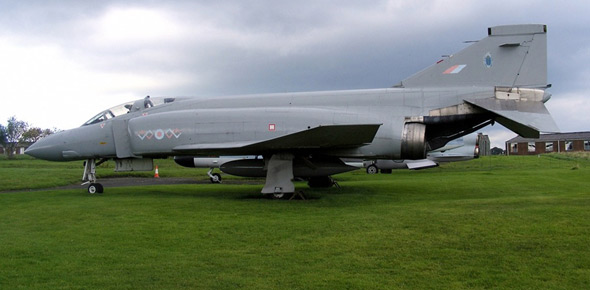(638) Which component on the B–1 adjustable aircraft maintenance...
(638) Which type of mechanism does the B–4 adjustable aircraft...
(626) When verifying the proper operation of the MHU–83C/E...
(626) Check the MHU–83C/E bomblift backup hydraulic system by
(642) The chain hoist on the universal jack tester is operated by
(628) If a bomblift starter failed to operate, which step should be...
(628) When troubleshooting the MJ–1B bomblift electrical system,...
(616) At which storage cylinder pressure, in pounds per square inch...
(630) Which must be done prior to raising or lowering the mast from...
(602) When should starting aids be used to start the New Generation...
(631) Where can you find test procedures for a particular component on...
(606) Which MA–3D air conditioner control switch allows the...
(637) Which must be done before lowering the ram on the B–6...
(624) During the MJ–1B bomblift operational check, all hydraulic...
(638) The B–4 adjustable aircraft maintenance platform can...
(610) Which must be accomplished to avoid damage prior to operating...
(624) As soon as the MJ–1B engine starts, check for sufficient
(611) How can a restriction in a refrigerant system be identified?
(641) When servicing the hydraulic cart, which prevents large...
(614) Which position should the vent valve be in when liquid oxygen...
(616) To start the self generating nitrogen servicing cart (SGNSC),...
(629) The engine safety circuits on the FL–1D floodlight set...
(619) The purpose of the low pressure pump on the MJ–2A–1...
(606) Refrigerant leaving the evaporator coil, in the MA–3D air...
(623) Continuous movement of pressurized hydraulic fluid in the...
(606) When starting the MA–3D air conditioner, hold the safety...
(639) Which section of the MD–1 towbar has a screw actuated fork...
(639) The purpose of the lift mechanism on the MD–1 tow bar is...
(628) The most obvious and easiest way of isolating most hydraulic...
(613) Every how many years is the hydrostatic test due on the receiver...
(617) Which is the proper level in the self generating nitrogen...
(618) During an operational check of a self-generating nitrogen...
(619) Which position must the reservoir selector valve be in when...
(620) Which MJ–2A–1 hydraulic test stand switch provides...
(603) Repair of ground heater equipment should never be attempted
(631) When a FL–1D floodlight set comes in with a write-up, how...
(604) Heat that can be felt and added or subtracted to a substance...
(605) A good refrigerant will
(623) Which MJ–1B bomblift valve prevents collapsing of the...
(623) Which valve is used to slowly raise or lower the MJ–1B...
(607) Refrigerant is always removed through the
(608) Which A/M32C–10D air conditioner component extracts energy...
(640) Which position is the valve handle placed in to precharge the...
(612) On a basic rotary compressor, which prevents air from leaving...
(612) Oil in a rotary vane compressor
(613) The MC–20 air compressor provides which kind of air for...
(615) How is the air compressor in the self generating nitrogen...
(620) Which MJ–2A–1 hydraulic test stand engine system...
(621) Which valve must be opened when setting up the...
(632) Which are the two lifting capacities (pounds) of the davit (lift...
(604) Heat added to a gas is
(635) Which component provides manual speed adjustment on the...
(622) Which type of wrench should be used on brass or aluminum...
(623) Which type of pump is used on the MJ–1B bomblift truck...
(623) The volume of oil delivered from the hydraulic pump to the...
(623) Which MJ–1B bomblift component converts hydraulic pressure...
(609) Which medium does the ACE 802S air conditioner heat boost system...
(625) Which MHU–83C/E bomblift component supplies the brake...
(611) In troubleshooting, which is the first step that must be...
(627) How do you check the MHU–83C/E bomblift shift lock lever...
(612) On the MC–2A rotary sliding vane compressor, the minimum...
(601) The heater control unit (HCU) on the New Generation Heater (NGH)...
(618) Which is important to keep in mind when performing maintenance...
(621) Which is the setting of the MJ–2A–1 hydraulic test...
(622) The hydraulic test stand high pressure pump is difficult to...
(636) If the air intake of the AF/M32T–1 cabin leakage tester...
(623) Which prevents overpressurization of the steering system on the...
(608) An A/M32C–10D air conditioner air cycle machine consists...
(609) The ACE 802S air conditioner compressor switch must be held in...
(609) Which is the compressor displacement when the ACE 802S air...
(609) Which action occurs in the ACE 802S air conditioner evaporator?
(610) Which valve must be opened prior to starting the ACE 802S air...
(625) Which is the purpose of the MHU–83C/E bomblift rear...
(607) Which type of refrigeration system leak occurs when the pressure...
(637) Which is the reservoir fluid capacity and system pressure of the...
(619) The purpose of the MJ–2A–1 hydraulic test stand...
(602) When operating the New Generation Heater (NGH), turn the heat...
(607) A refrigerant reclaimer is used to
(640) Which is the overflow tank capacity (gallons) on the...
(612) Which provides pressurized oil to the rotor blades of the...
(613) Which is the proper compressor oil level when checking the sight...
(619) The output volume (gallons per minute) of the...
(633) In which position is the engine switch placed to energize the...
(619) Which valve protects the MJ–2A–1 hydraulic test...
(634) While operating the split deck maintenance platform you realize...
(636) You observe low cabin pressure reading during operation of the...
(606) On the MA–3D air conditioner, which component shuts off...
(635) Which component in the pneumatic system of the AF/M32T–1...
















